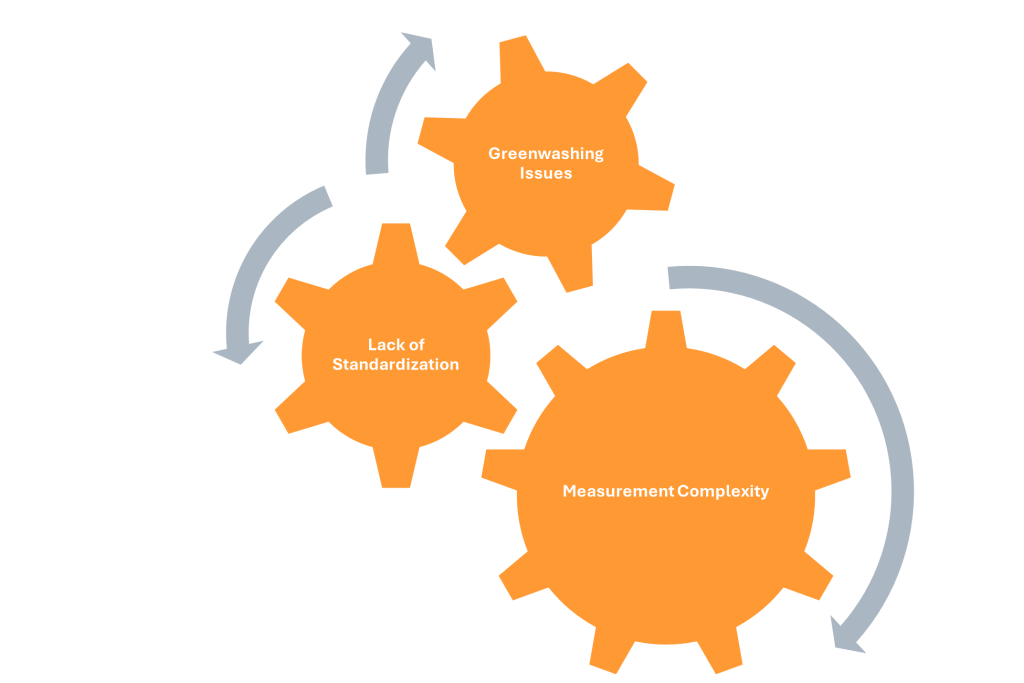Scope 4 represents a pivotal extension in emissions accounting, encompassing emission reductions that occur outside a product’s value chain or lifecycle due to the use of the product. Unlike Scopes 1, 2, and 3, which focus on direct and indirect emissions within an organization’s operational boundaries, Scope 4 addresses the broader impact a product has on reducing global emissions. This is often referred to as avoided emissions, carbon handprint, or enabling effects, emphasizing the product’s role in enabling lower emissions in other systems (GHG Protocol, 2011).
Defining Scope 4 and Its Implementation
Scope 4, though not officially part of the GHG Protocol, is gaining traction under various frameworks aimed at capturing these avoided emissions. The concept was early defined as “emission reductions caused indirectly by a product” and should provide the same function with significantly lower GHG emissions (Mission Innovation Action Plan, 2018). This is distinct from merely reducing a company’s own emissions footprint; instead, it helps others—often customers—reduce their emissions globally.
Examples of Scope 4 impacts include technologies like virtual meetings, which drastically cut travel-related emissions during the COVID-19 pandemic by enabling participants to meet without physical travel (Requena, 2021). Similarly, replacing old industrial motors with more efficient ones leads to significant reductions in operational emissions across various sectors (Business Reporter; Normative.io).
Frameworks and Methodologies for Assessing Scope 4
Multiple methodologies have been proposed to standardize the assessment of Scope 4 emissions. For instance, the Avoided Emission Framework (AEF) and the Carbon Handprint Guide are notable for their structured approaches to evaluating the positive climate impacts of products and services.
Key Elements of Scope 4 Frameworks (Requena, 2021[1]):
- Defining System Boundaries: Identifying the extent of the system impacted by the product.
- Establishing Baselines: Comparing emissions with and without the product, often using a Business-as-Usual (BAU) scenario.
- Calculating Emissions: Using emission factors to quantify the emissions generated by both the solution and the BAU.
- Assessing Market Impact: Evaluating the solution’s penetration and market share.
- Considering Rebound Effects: Accounting for any increase in emissions elsewhere due to the solution’s deployment.
What are the benefits of implementing Scope 4?
Scope 4 promotes a broader understanding of a product’s impact on global emissions, encouraging innovations that extend beyond organizational boundaries (Mission Innovation Action Plan, 2018). It supports sustainable innovations. By recognizing products that enable significant emissions reductions elsewhere, it incentivizes the development of technologies that contribute positively to climate goals (Requena, 2021). It improves market transparency, providing stakeholders with a clearer view of the environmental benefits of various solutions, helping to identify and invest in technologies with the greatest potential for emissions reduction.(see Figure below).


The limitations in implementing Scope 4 (see Figure above) are the measurement complexity and lack of standardization. The lack of standardized methodologies for assessing and reporting avoided emissions can lead to inconsistencies and challenges in comparison (GHG Protocol, 2011). Companies might misuse Scope 4 to exaggerate their positive impacts without adequately addressing their direct emissions, risking misleading stakeholders (Requena, 2021).Allocating and attributing avoided emissions can be complex, especially when multiple actors are involved in the benefits (Mission Innovation Action Plan, 2018).
Synthesis and Conclusion
Scope 4 provides a valuable lens for understanding the broader environmental benefits of products and services, focusing on how they reduce emissions outside their direct lifecycle. This approach complements traditional emissions scopes by capturing the enabling effects that contribute to global emissions reductions. However, the implementation of Scope 4 faces significant challenges, including the need for standardized methodologies and the risk of overstatement of benefits. Despite these challenges, Scope 4 frameworks offer crucial insights that could drive innovation and enhance the overall effectiveness of sustainability strategies.
References:
- A. Requena Carrión, STUDY ON PRINCIPLES For avoided emissions accounting, https://cleantechscandinavia.com/wp-content/uploads/2021/03/Analysis-on-Avoided-Emissions-Frameworks_Cleantech-Scandinavia.pdf (accessed Jun. 18, 2024).
- H. Vepsäläinen, “Scoping out net zero: Electric motors paving the way for industry,” Business, https://www.business-reporter.com/sustainability/scoping-out-net-zero-electric-motors-paving-the-way-for-industry
- Z. Vaskovich, J. McCreesh, and E. Farbstein, “How manufacturers can reduce carbon emissions,” Normative, https://normative.io/insight/reduce-manufacturer-carbon-emissions/
- S. Russell, “Estimating and reporting the comparative emissions impacts of products,” World Resources Institute, https://www.wri.org/research/estimating-and-reporting-comparative-emissions-impacts-products
- “Mi NCI Publications,” Mission Innovation Net-Zero Compatible Innovations Initiative, https://www.misolutionframework.net/publications#reports
- S. Russell, “Estimating and reporting avoided emissions: GHG protocol,” Estimating and Reporting Avoided Emissions | GHG Protocol, https://ghgprotocol.org/estimating-and-reporting-avoided-emissions
- N. Runyon, “Could ‘Scope 4’ emissions reporting be on the horizon?,” Thomson Reuters Institute, https://www.thomsonreuters.com/en-us/posts/esg/scope-4-emissions-reporting/
- K. Wang et al., Circular economy as a climate strategy: current knowledge and calls-to-action, https://www.nrel.gov/docs/fy23osti/84141.pdf
- Delivering the Mission Innovation Action Plan: 2018-2020, http://mission-innovation.net/wp-content/uploads/2018/05/MI3-Action-Plan.pdf
